Have you wondered what your family member experienced in World War II? How about about tracing World War II footsteps of your father, grandfather, uncle, or cousin? I had the wonderful privilege to follow in my dad’s path in Germany and France. It’s extremely moving. It is definitely the experience of a lifetime. I highly recommend it.
 My dad, William Savely, was born in 1919 in Ohio. He grew up and joined the army, eventually becoming a second lieutenant.
My dad, William Savely, was born in 1919 in Ohio. He grew up and joined the army, eventually becoming a second lieutenant.
He left for France in April of 1945, right before the end of the war. My dad served as part of the occupying force keeping peace after the war. Landing in Europe, he moved across France, just south of Luxembourg, and reported in Angevillers to the 2985th Company, 82nd Battalion, 14th Depot, staying there till 5/4/45.
Tracing World War II Footsteps in Schwabach, Germany
Dad arrived in Schwabach, Germany on 5/8/45 – the day the war in Europe ended. The Germans fled only about a week earlier. Schwabach today is a charming town with no evidence of the rubble from World War II bombing. The medieval wall still surrounds the half-timbered buildings of this peaceful place.
The O’Brien barracks, occupied by U.S. troops until 1991, are now a museum. In it, we found photos of bombed out buildings that are exactly what my dad would have seen when he arrived. 






 For me, it was so moving to stand on the grounds of the barracks, where my dad heard the news of the war’s end. Wearing his dog tags was a way to honor his memory. I’m grateful he kept them in a box in the back of a drawer, undiscovered for 72 years.
For me, it was so moving to stand on the grounds of the barracks, where my dad heard the news of the war’s end. Wearing his dog tags was a way to honor his memory. I’m grateful he kept them in a box in the back of a drawer, undiscovered for 72 years. 
On May 10, 1945, Dad was assigned to the 90th Infantry Division, which is known as the Tough Ombres. He was in Company M of the 357th Regiment and was a Heavy Weapons Platoon Officer. Dad was next assigned to Flossenburg Concentration Camp, almost to the border of what was Czechoslovakia. He went through the gates on July 7, 1945.
On to a Concentration Camp in Flossenburg, Germany
The attraction for the German war machine was the large granite quarry in Flossenburg. As the war went on, more and more prisoners from virtually every country in the European theater of the war were sent here to wrest granite slabs from the earth.
Today, the quarry still produces granite, while the camp has become a peaceful memorial to those who died here. The administration building is now occupied by historians and others who run the memorial museum and research the prisoners and their families.
 We were honored with a full-day tour by two of these amazing historians. We learned so much firsthand about each of the buildings and the layout of the camp. We heard about the lives of the prisoners. And we talked about the role of the U.S. army in liberating the camp and occupying it right after the war.
We were honored with a full-day tour by two of these amazing historians. We learned so much firsthand about each of the buildings and the layout of the camp. We heard about the lives of the prisoners. And we talked about the role of the U.S. army in liberating the camp and occupying it right after the war.
We toured the gardens. We went in the memorial chapel with its lovely stained glass. We paid respects at the mass grave. We stood in the shadow of the guard tower and somberly entered the crematorium. 

The German guards left the sickest prisoners in camp when they fled. This is what Dad would have seen when he arrived.
Even though I had read all I could find about Flossenburg before our trip, I learned even more from actually being there and spending the day with Annabelle and Tamara. In the museum, we found this photo and learned that German SS prisoners arrived at Flossenburg when Dad was stationed here. He surely would have seen them. He spoke of the camp prisoners who were ill but never mentioned these SS soldiers.
Here is the memorial to the 90th, which my dad joined a few weeks after the Tough Ombres liberated Flossenburg.

Dad’s superior wrote on his evaluation during his time at Flossenburg: “This officer should be an Engineer officer instead of an Infantry Officer as he is a graduate Electrical Engineer.” So Dad transferred from Flossenburg to Le Havre, France to join the Engineer Corps.
I’m guessing around this time my dad procured a camera. From this point on, he has photos he put in a leather-bound album after he came home. 

Enjoying Leave in Paris, France
My dad visited Paris after leaving Flossenburg. Of course, it was easy to go to the same places in this city. 
Stationed in Le Havre, France
Le Havre is a busy port city on the English Channel. My dad helped restore electric lines. Dad’s superior wrote of his port electrical officer: “A very intelligent officer who devotes a lot of time to planning. Handles his work in a quiet and efficient manner.”
Here are a few of his photos. One is of a band formed by the German prisoners of war in Le Havre. My dad spoke highly of them, saying they didn’t want to be sent back to Germany, as their country was decimated, so they were cooperative and helpful. And musical!

Traveling on the Rhine, Germany
Before coming back to the U.S., Dad made his way through Germany. He traveled on the Rhine to St. Goar, where we were able to stay. 
Home via New York, New York
On 7/26/46 Dad boarded the U.S.S. General W. P. Richardson, bound for New York harbor. His buddies enjoyed soaking up the sun on the voyage. 
I love this grainy photo my dad took from the ship. He was pleased to be home. I was moved by this same sight decades later. 
That’s the story of the army days of my Dad, Bill Savely. But there’s one important addition to the story. From France, Dad sent a telegram to his sweetheart Mary Petrafka, saying “How about being my Valentine for keeps?” and the rest is history. They married February 6, 1947 and enjoyed being Valentines for 56 years, until Dad left us December 8, 2003. He lives on in our hearts.
Tips for Tracing World War II Footsteps and Finding Military Information
To get records of someone who was in the U.S. service in World War II, go to the National Archives website and follow the directions to fill out their form. It’s well known that records burned in the 1970s, and I was discouraged from trying this, but I went ahead anyway. I got a pile of records that were slightly blackened around the edges but totally readable. It’s worth a try. Some burned and some didn’t, but you won’t know unless you order them. The cost is about $70.
Reach Out to Others Who Can Help
I also would encourage you to look up information and groups of the unit your family member was in. There’s still an active group from the Tough Ombres, so I learned more about that army with just a bit of research.
If you can find someone who knows someone, you may uncover a treasure of information. I contacted Jennifer Holik at the World War II Writing and Research Center. She put me in touch with a soldier who was in the liberation unit at Flossenburg. He sent me a huge notebook of information he’s collected so I could copy this. It’s a one-of-a-kind resource I was so thankful to have. He and other army guys encouraged me and helped me plan my trip. Reach out — you’ll be glad you did!
Prepare for Your Visit To Memorial Sites
If you are going to a public memorial like that at Flossenburg, write ahead and let them know you are coming. I was planning only a short time and maybe a one-hour tour. When the historian wrote back that she would like to offer to guide me personally, that turned into a full day and a priceless time of learning about the camp at the exact time my dad was there. You can read more about my visit here.
As you can tell, tracing Dad’s army footsteps was an unforgettable experience. If you want help getting started with your own journey, let me know. I’d love to encourage you! 
This post contains affiliate links. Clicking on them may result in a commission being paid to us if you purchase afterwards. This is at no extra cost to you. Thanks.
Where to stay when visiting Flossenburg
I recommend staying in nearby Nuremberg, a bustling city with a wide choice of accommodations and restaurants. And it’s a beautiful place to visit.
I chose a hotel that turned out to be the oldest standing hotel in the walled old town, built in the 14th century. The outside may be historic, but the inside is modern and proved to be my favorite hotel of this trip. Hotel Elch is only a block from the wall and a couple of blocks from the castle. The rooms have a pleasant color scheme. The buffet breakfast is luscious and all the hotel personnel were friendly.
Book your train tickets with Trainline for easy and reliable service.

Renting a car? I can recommend renting with Auto Europe.





















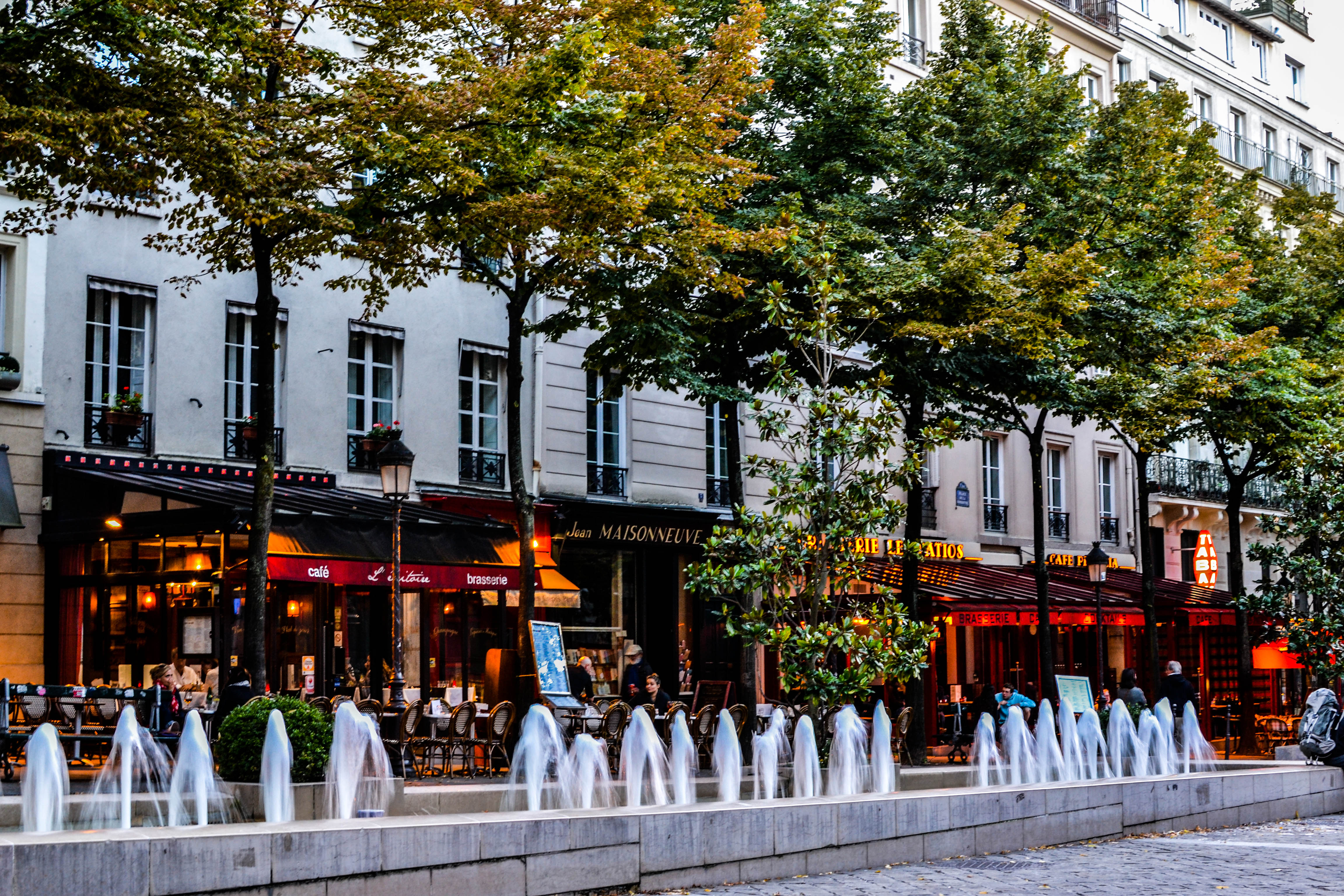

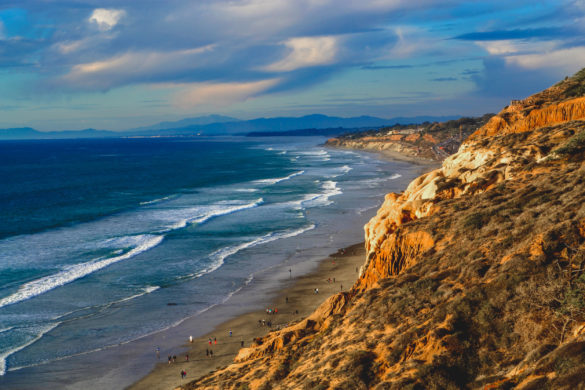
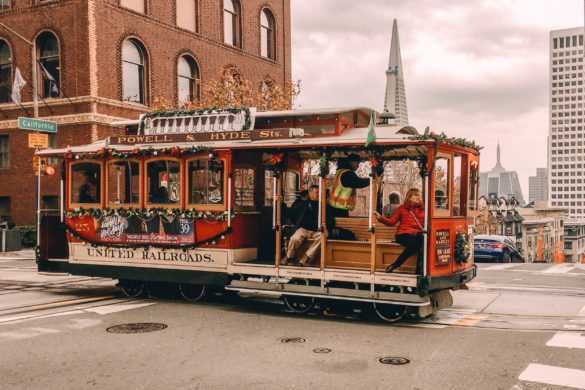

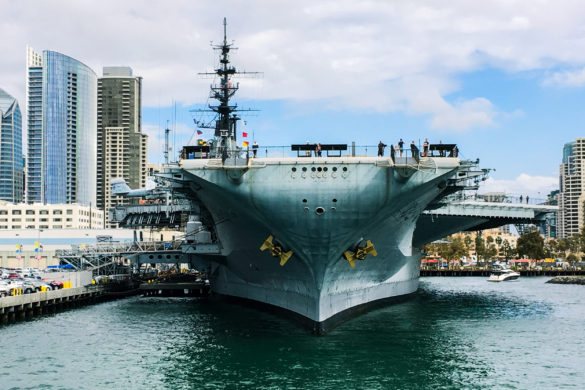

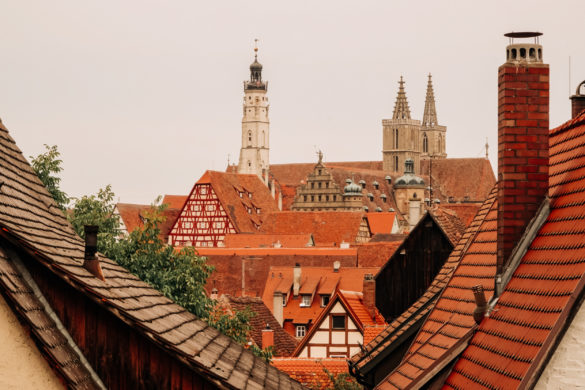

38 Comments
What an amazingly powerful trip! It is amazing to have the old photos and then see the “now”.
Thank you for sharing!
A wonderful tribute to your father.
What a moving experience. You father’s photo album reminded me of a family album I just went through. It had the same black pages and white or light coloured ink. Rather than my father it was put together by my grandmother about life in the early 1900s. – Margy
I think that was the style of albums back then. I’m so thankful my Dad put this together, as he didn’t talk about his experiences. The album is invaluable!
I’m certain that this trip was very moving to you. So great that you could trace your father’s footsteps so accurately. Tose were terrible times in Europe. My father was in the front line in our Winter and Continuation wars against Russia. He survived, did not even get injured and kept his joyful mood.
I’m pleased to hear your father survived, especially knowing he was in the front lines. It is hard to imagine those days.
I find it so amazing that ou were able to follow in your father’s footsteps and have a book of his photos from his time in Europe! This is so encouraging and I hope it helps many families track their history! #FeetDoTravel
Your post brought tears to my eyes. I’ve been watching lots of Dday docus on Dutch tv this week. My hometown was liberated by The Polar Bear regiment, Brits and Canadians. There is a small Canadian cemetary and mothers took care of the graves, because the soldiers mothers weren’t able to. It led ti friendships across oceans.
#feetdotravel
That’s heartwarming, Esther. Your country suffered so much. The peaceful cemeteries are a place to remember …
A wonderful post, Sharon. I appreciate you sharing your journey and your dad’s WWII experience with us. It inspires me to do something similar. Thanks!
Let me know if you do pursue this. I would be glad to help / encourage you!
Wow, what a signifcant story, Sharon. It must have been a moving journey for you – all the details, finding the dog tags after so long! What I found also moving was you got to know what your dad’s superiors said about him:) A great post for All Seasons near D-day – thank you for sharing this with All Seasons, dear Blog Friend! PS. loved the photos in your post too:)
Yes, it was unforgettable! I learned so much about my Dad from the National Archives records. He was rated high in intelligence and low in “Force.” He was gentle, so that makes perfect sense. I found out he broke his collar bone as a child — even my mother had no idea! Thanks for hosting All Seasons!
Impressive! Thanking your dad for his service. My great uncle served over and was captured. He was released and lived 6 years after the war. I think captivity took too much out on his body.
Oh my goodness; that sounds like an amazing journey! I love how your blog post so seamlessly combines the old photos with the new too.
How amazing to be able to walk in your father’s footsteps. Memories to cherish forever.
What a wonderful journey – a great way to honor your father.
Thanks for linking up at https://image-in-ing.blogspot.com/2019/06/pop-art-i-dont-get-it.html
What an amazing post. Good for you to do the research and go where your father was. And great that you kept the photo album.
My father joined the army right after World War II and was an MP at the Japanese War Crimes trials in Tokyo. He had a lot of stories.
I had an uncle who was an army pharmacist in the War and kept a detailed diary of his time in North Africa as the allies were fighting the the Germans there and then later into Sicily, Italy, France and finally Germany.
Btw, my brother in law was stationed in Schwabach when he was in the Army years ago. He and my sister loved the place.
That’s a lot of fascinating history! And your brother-in-law was in Schwabach — it’s a small world!
This is a brilliant post. What a wonderful idea for a trip.
A beautiful post and research into your father’s WWII experiences. I hope you’ve gathered all the papers together for future generations.
Amazing journey into your father’s past. I wish I knew more about where my father was stationed in Germany, but he never spoke of it.
Have a great week,
Kippi
Fascinating and poignant!
This is a wonderful tribute to your dad. What a great adventure with awesome images and information.
I’m so glad you are a part of ‘My Corner of the World’ this week!
My Corner of the World
What an amazing story and beautiful tribute. I LOVE the ending about how he proposed to his sweetheart. He sounds like a wonderful man. #wanderfulwednesday
What an incredible trip you made and how wonderful to be shown around with such care! I love your dad’s album too. He kept it so beautifully. What an wonderful keepsake for you to have. #WanderfulWednesday
What a heart touching story! Traveling all way back through the places and grainy photos. My grandfather served in the USSR army, he was wounded near Berlin. And several years ago we tried to research for more places to follow his footsteps across Europe, but we almost had no photos! Also, every year we have fewer witnesses of what happened! It´s amazing that next generations could still see an authentic story through your blog. #feetdotravel
What an incredible trip and a lovely tribute to your father.i am glad you could retrace the steps. I can imagine the amount of research you would have to go through and the emotions along with it. Thank you so much for sharing this post.
What an amazing thing to do. You’ve got me thinking about doing something similar for my Grandfather and WW1 #FarawayFiles
So very amazing Sharon. What an amazing thing to walk through history with his memory and records. My father’s father flew B-17 bombers from England over Germany in the US Army Air Corps (later to become the US Air Force.) We have some records of his flights and some information where he was based, but he did not like to talk about his experiences and we have to piece together his information now. A little different to track down as he was piloting planes as well. Thank you for sharing your Dad’s story and your experience following his footsteps. So very interesting. #FarawayFiles
What an incredible story and journey to take! That’s so amazing that you still have his photographs and stories kept alive. #WanderfulWednesday
wow, love your story!!!! This is definitely one of the best ways to experience the history and to learn something important to us! How can you find all those old pics!!! Your dad kept all of them? That was awesome! I wish my parents keep their parents’ or grandparents’ old memories for me to explore… (which is very little chance)
I have been wanting to write a story of my dad’s military experiences for some time. I just read your story and it inspired me to get going! He was in Europe and in some of the same places that you dad was. I was stationed in Germany myself in the early 70’s and crossed where my dad served when my wife and I visited Holland. Not having enough information at the time of his particular movements I couldn’t pinpoint the exact place. I have lots of photos, maps and reunion articles of his unit…the 280 Combat Engineer Battalion. So I have what I need…get going Larry. Thanks
Hi, Larry,
I do hope you pursue learning more about your dad’s military experiences. If you haven’t yet, contact the National Archives in St. Louis and request your dad’s records. Knowing his battalion should help. It was fun to contact men who were in my dad’s same army / location. Knowing my family members now have the photo book I made for them about my dad means a lot to me. Who knows what great-grandkids will get to know their great-grandfather this way?! If you have any questions you think I can answer, let me know. It’s been one of my dreams to follow in my dad’s footsteps!
My dad was a French prisoner of war in Schwabach. He was captured in France at the beginning of the war and was transported by cattle train to the camp, Many died of dysentry and malnutrition during the journey. My dad was made to work in the ammunition factory and had all his teeth removed thinking he could be repatriated, but the German saw through the deceit and he was there for 2 years. My mum was sending him parcels of bread which he dipped in water in order to eat. They tought the new incomers how to ruin the supplies of ammunition in order not to help the German war effort. My brother has written a book about my dad’s in the camp. My dad being a very good actor created a theatre group which was very popular amongst the prisoners. They also had singing competations and sporting activities. He had another go at repratriation by blinding one of his eye. This time it worked and he was sent back to France on a prisoner exchange. My dad never talked to us children about his time in the camps. I always wondered why he was blind in one eye and hand to wear false teeth. It is not until my brother did all his research with dad’s army comrades and his family that we got most of the story. Anyway I thought I tell you some of the story.
Thank you so much for the helpful resources and the stories. I am talking with my family this summer to follow my grandfather’s service in WWII in Europe. I hope the enitre family (his two children and three grandchildren) can make the trip in 2025/2026
My dad served there too as has the bad ombre pat h and same unit….I have many pictures of men he served with and your dad could be in there too
My dad, also from Ohio, was at Schwabach 10 years later. I’ve been going through his photo album and trying to identify the places he was. Thank you for posting your story. Dad had a dozen photos of Schwabach but not a single note on the backs. The fountain photo is the one that helped me out. Dad visited Paris on his 21st birthday. Thank you for posting this story and the resources.